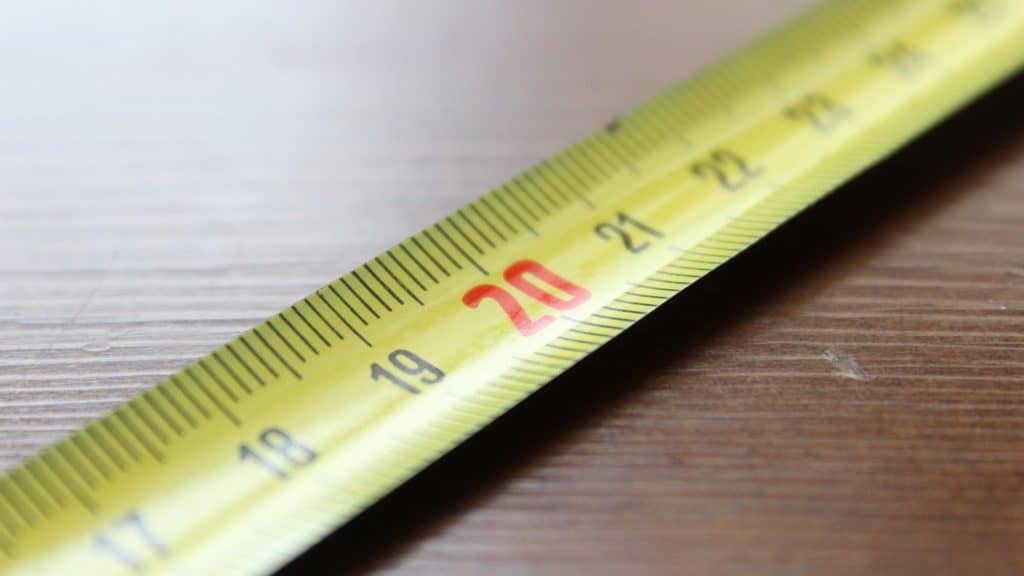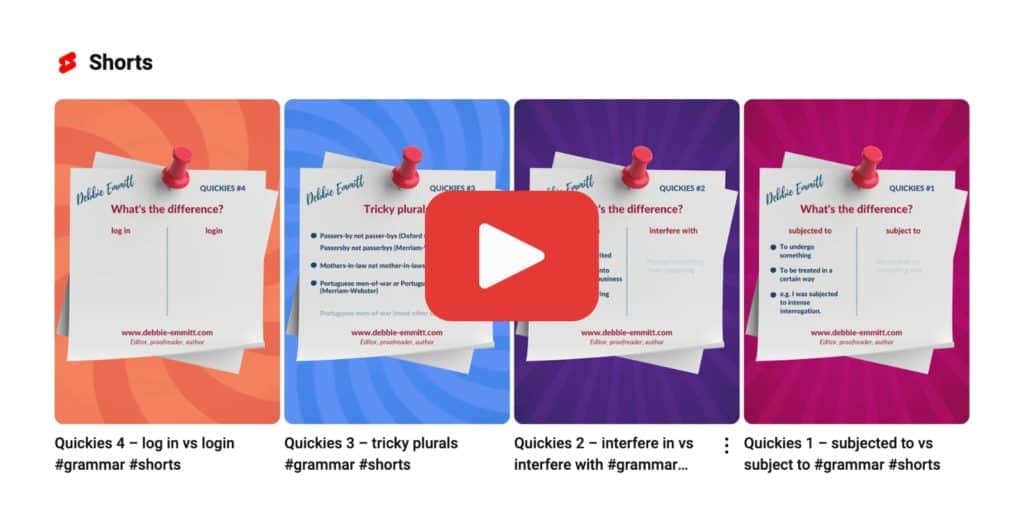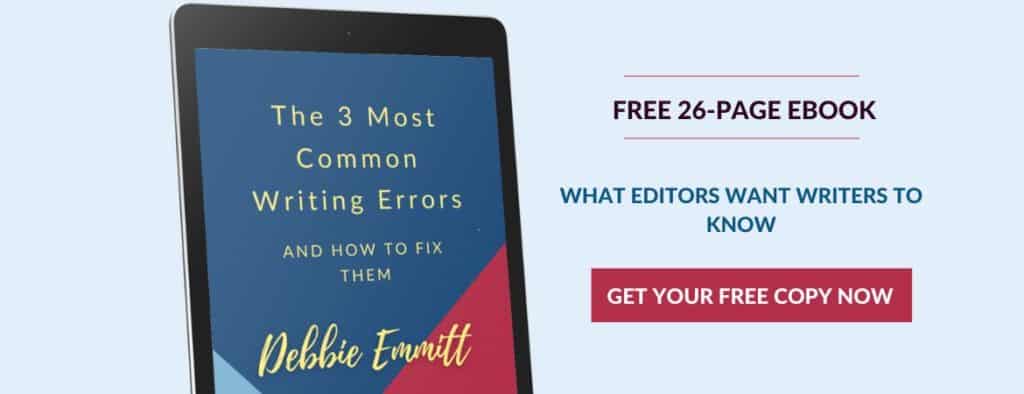
Ever wondered how to correctly write number ranges? Should you use a hyphen, en dash or em dash? How about whether or not to use spaces? And whether to use ‘from’ and ‘to’ instead of all these pesky dashes? Wonder no more.
Whether you write fiction or non-fiction, business proposals or blog posts, sooner or later you will be faced with a similar dilemma to these beauties (answers at the bottom of the page):
- Do I write ‘2000 – 2050’, ‘between 2000 – 2050’ or ‘from 2000 – 2050’ (Hint: it’s none of these)
- Is it ‘from £50 — £100’, ‘£50–£100’ or ‘between £50 and £100’? (Hint: two of these are correct)
- Should I write ‘two to 10’, ‘2–10’ or ‘from 2-10’? (Hint: one of these is correct)
I’ll go over some general rules of punctuation, spacing and grammar for number ranges, then we’ll look at specific examples when dealing with ranges of years, temperatures, currencies and more.
A quick note: I’ve used italics for correct examples, and speech marks for incorrect examples, to avoid confusion.
General rules for number ranges
Hyphen, en dash or em dash?
When writing ranges of numbers, most style guides agree on the use of an en dash (although the AP style guide prefers a hyphen). Do not use an em dash.
If you need a refresher on the difference between the three types of dash, here you have it:
- Hyphen (-) The shortest of the three, and the one most often used incorrectly with spaces when an en dash without spaces is needed (unless specifically using AP style).
- En dash (–) The champion of the hour. This is the little guy – or gal – you need for number ranges. So called because it’s the length of a lower-case ‘n’.
- Em dash (—) The longest of the three dash types. It has its specific uses, but a number range is not one of them. And, you guessed it, it’s the length of a lower-case ‘m’.
How to type an en dash?
I get it. It’s one thing to know which dash to use, it’s a whole other kettle of balls to find the thing on your keyboard. The hyphen is easy, it’s always there, whether on Mac or Windows, faithfully sharing real estate with the underline.
To type an en dash:
- Mac users – Option + hyphen key (on your Mac the Option key may be labelled Alt)
- Windows users – More complex. The only method I’ve found to work on my Windows 10 laptop is via the emoji window. To get this to pop up, tap the Windows key + full stop/period key (.) Select the ‘Symbols’ icon (third tab along at the time of writing) and you’ll find the en dash on the ‘General punctuation’ tab (denoted by ‘<‘). Other methods that may work for you (they don’t for me, even with number lock on) are: Alt + 0150 on the numeric keypad (or with NumLock on), or Ctrl + minus key on the numeric keypad.
For the sake of completeness, to get an em dash: Mac users hit Option + Shift + hyphen key; Windows users use the same instructions as for the en dash if using the emoji window, or Alt + 0151 if you have a separate numerical keypad (or if NumLock works for you), or Ctrl + Alt + minus key.
Spacing
When dealing with number ranges, generally speaking you do not include a space either side of the en dash. Keep things cosy by closing those gaps. No social distancing needed:
- 1997–2001: Chief cook and bottlewasher at Berni Inn.
- Read chapters 7–9 before Friday.
- It must have been 1–2 degrees yesterday. My fingers were numb!
Grammar
There are three ways you can express ranges of numbers, whether you’re dealing with years, ages, temperatures, page numbers and more:
- Use the en dash, as we’ve seen, e.g. 1–10 years
- From/to, e.g. From 1 to 10 years
- Between/and, e.g. Between 1 and 10 years
It’s the very existence of this choice that leads to confusion. One of the most common errors I see when editing and proofreading is mixing two of the three methods listed above. The following examples are both incorrect:
- “I spent between £150–£200.” (Mix of the ‘between/and’ option and use of the en dash)
- “We have to read from page 5–25 before next week.” (Mix of the ‘from/to’ option and use of the en dash)
When deciding which of these three methods to use, bear in mind that if you’re writing for the web, or for a document that will be read on screen, not all screen-reading software (used by people with visual impairment) can interpret en dashes. In this case, it’s best to use words rather than dashes (from…to or between…and)

Don’t mix numerals and words
Many style guides (usually for non-fiction) advise using words for numbers below 10 (two, seven etc), and numerals for 10 and above (13, 145, 78, 585).
That’s all well and good, but what about a number range that starts below 10 and ends above 10?
Consistency rules.
In other words, use digits for the number below 10: There were 8–12 children in the park.
Elision in number ranges
‘Elision’ in the context of number ranges is a fancy term for chopping off the start of the second numeral in the range. The following ranges contain elided numbers:
- 41–2
- 156–7
- 1987–92
Style guides vary in their advice regarding elision in number ranges. Below are the Chicago rules, with a table below comparing my example number ranges with Oxford style (AP style doesn’t appear to specify an elision rule – if you know otherwise, drop me a note in the comments!):
- Use all the digits (so no elision) if at least one number in the range is from 1 to 100, e.g. 2–10, 67–69, 82–323.
- For multiples of 100, use all the digits, e.g. 100–107, 300–329, 2,200–2,254.
- If at least one number in the range is between 101 and 109, 201 and 209, 301 and 309 etc, only show what has changed, e.g. 103–9, 308–64, 4,201–8.
- In all other cases, use two digits (unless more than two digits are required to show what has changed), e.g. 286–89, 593–678, 1,053–56, 2,869–4,001.
- Do not omit any Roman numerals in number ranges; they are always written in full, e.g. xxvi–xxvii.
| Actual number range | Chicago | Oxford |
|---|---|---|
| 2–10 | 2–10 | 2–10 |
| 67–69 | 67–69 | 67–9 |
| 82–323 | 82–323 | 82–323 |
| 100–107 | 100–107 | 100–107 |
| 300–329 | 300–329 | 300–29 |
| 2,200–2,254 | 2,200–2,254 | 2,200–54 |
| 103–109 | 103–9 | 103–9 |
| 308–364 | 308–64 | 308–64 |
| 4,201–4,208 | 4,201–8 | 4,201–8 |
| 286–289 | 286–89 | 286–9 |
| 593–678 | 593–678 | 593–678 |
| 1,053–1,056 | 1,053–56 | 1,053–6 |
| 2,869–4,001 | 2,869–4,001 | 2,869–4,001 |
Note that Oxford prefers to elide to the fewest figures possible, with the exception of teens (10 to 19) because of the way they are said out loud.
Check out my post on best books for editors and proofreaders, including style guides
Number ranges for years and dates
Range of years
When writing a range of years, both Chicago Manual of Style and Oxford advise the following when using an en dash:
- If the years are within the same century and do not include an ’00’ year, omit as many digits as possible, e.g. 1201–67, 1939–45, 2001–9.
- If the two years indicated are of different centuries, or include the ’00’ year, do not omit any digits, e.g. 1234–1387, 1800–1801, 1999–2009.
- However, where a range including two years of the same century occurs in a title, do not omit any digits, e.g. The War of the Roses, 1455–1487.
- Also, when showing the dates a person lived, include all digits, e.g. Charles Dickens (1812–1870)
The Oxford Style Guide adds that if the two dates are approximate, repeat the c. abbreviation for each date, e.g. c. 1345–c. 1578 (c. should be in italics, with a space following).
The AP style is not very forthcoming in this respect, but my online digging suggests that AP prefers repeating two digits for year spans below 10 years, but you may also repeat all digits. For a range over 10 years, repeat all four digits.
You can also use the pairings ‘between…and…’ and ‘from…to…’ for year ranges, but remember to use only one of these formats, not a hybrid:
- From 1990 to 1995 (not “From 1990–1995” and not “Between 1990–1995”)
- Between 2000 and 2010 (not “From 2000–2010” and not “Between 2000–2010”)
BC and AD, or BCE and CE
BC/AD and BCE/CE are abbreviations used in the Gregorian calendar – the global standard for the measurement of dates. Either BC or BCE refer to years before the birth of Jesus; either AD or CE refer to years after the birth of Jesus.
BCE and CE are the secular versions of BC and AD respectively:
- BC – Before Christ
- AD – Anno Domini (in the year of the Lord)
- BCE – Before common (or current) era
- CE – common (or current) era
In your number range, if both dates are AD, there is no need to include the abbreviation ‘AD’, although some writers prefer to include it for clarity if the year is before the first millennium:
- 1234–1387, 1800–1801, 1999–2009, AD 3–AD 10, AD 675–AD 700
- From 1234 to 1387, from AD 3 to AD 10
- Between 1800 and 1801, between AD 3 to AD 10
If one or both dates are BC, you need to include BC/AD as appropriate. While you could argue that it should be obvious if a date range is wholly BC due to the numbers counting backwards, it is best to include BC for clarity. Some general rules from the Oxford style guide:
- Write AD/BC in small caps (not all style guides stipulate this anymore, so it’s worth checking the guide you adhere to. I haven’t used small caps here.)
- BC goes after the year, while AD goes before it (because it means ‘in the year of the Lord’) (Chicago style also stipulates this)
- Leave a space between the abbreviation and the year (also in Chicago style)
- Year spans in BC are always written in full (not elided) because an elided date could be misread as a complete year (due to the years counting ‘backwards’) (not sure if this is in Chicago style, but it seems basic common sense to me!)
Some examples:
- 20 BC–AD 100; from 20 BC to AD 100
- 436 BC–354 BC; from 436 BC to 354 BC
- 187 BC–125 BC (not elided to 187 BC–25 BC); from 187 BC to 125 BC
When a date is approximate and spans BC and AD, the Oxford Style Guide says to write it as follows: c. 17 BC–c. AD 78 (c. should be in italics, with a space following).
Years other than calendar years
When you need to show a span of years, for example, an academic year or a tax year, different style guides advise different formats.
The Oxford style guide says to use a solidus, or slash, and elide years (even BC years):
- 78/7 BC
- tax year 2001/2
- academic year 1997/8
AP style advises the use of a hyphen in place of an en dash, as a slash may not be transcribed correctly in some systems:
- 78-7 BC
- tax year 2009-10
- academic year 1997-8
Chicago style sticks with the en dash, as for any other elided number range:
- 78–7 BC
- tax year 2009–10
- academic year 1997–8

Range of dates
When writing date ranges, the rule is the same as for ranges of other numbers. Use an en dash with no spaces between the two dates (as per Chicago style).
NB. The examples below use the UK date order of day, month, year. The US order is month, day, year, and usually has a comma before the year, unlike the usual way of writing the date in UK English.
Also NB. These date ranges are inclusive (the event taking place within the date range ends on the second date, not the day before).
- Use whole date (day, month, year) if years are different, e.g. 1 January 1990–5 February 1995.
- Only include the year after the second date if the months are the same, e.g. 1 January–5 February 1990.
- Only include the month and year after the second date if these are the same, e.g. 1–5 January 1990.
As with a range of years, you can also use the pairings ‘between…and…’ and ‘from…to…’, but, repeat after me, no hybrid versions that mix these with the en dash format:
- From 1 January 1990 to 5 February 1995 (Also acceptable in the US is: From 1 January 1990 through 5 February 1995)
- Between 1 January 1990 and 5 February 1995
Ranges of ages
When writing an age range using the expression ‘year-old’, include a hyphen after both digits. Alternatively, avoid hyphens by rewording the sentence. For example:
- This game is suitable for 3- to 12-year-olds.
- This game is suitable for children aged 3 to 12. (‘ages 3 to 12’ is also used, and ‘aged 3 through 12’ is common in US English).
Check out my post on best books for editors and proofreaders, including style guides

Number ranges for times
12-hour clock
When writing a time range, you can use either a closed-up en dash (i.e. no spaces) or ‘from’ and ‘to’. For example:
- 5.30–6.30
- from 5.30 to 6.30
For times on the hour, avoid including ’00’:
- 5–6
- from 5 to 6
If you’d like to use ‘a.m.’ and ‘p.m.’, and both times are in the morning, or both times are in the evening, only use ‘a.m./p.m.’ with the second time:
- 5.30–6.30 p.m. (one hour)
- 5.30 a.m.–6.30 p.m. (11 hours)
- 5–6 p.m. (one hour)
- 5 a.m.–6 p.m. (11 hours)
- from 5.30 to 6.30 p.m. (one hour)
- from 5.30 a.m. to 6.30 p.m. (11 hours)
Check your house style for whether to use a colon or full stop/period between the hours and minutes.
NB. Oxford style (New Hart’s Rules), Chicago Manual of Style and AP style all put a space before ‘a.m.’ and ‘p.m.’, and use full stops/periods. For other styles, check their reference guide.
Please note that ’12 a.m.’ is midnight and ’12 p.m.’ is midday/noon.
Working 9 to 5 (what a way to make a living)
This time idiom can be written using either words or digits, and either ‘to’ or an en dash, depending on style.
Merriam-Webster lists it as ‘nine-to-five’ for the noun and adjective and gives a ‘less common’ variant as ‘9-to-5’. For example:
- I work a nine-to-five at the local store. (noun)
- I work a nine-to-five job at the local store. (adjective)
When used as an adverb, no hyphens are used, e.g. ‘I work nine to five at the local store.’ (or 9 to 5, or 9–5, depending on style).
24-hour clock
When writing times using the 24-hour clock, avoid ‘a.m.’ and ‘p.m.’, use a leading zero for single-digit hours, and use ’00’ for times on the hour. Other than that, the advice for 24-hour clock time ranges is the same as for the 12-hour clock:
- 05.30–06.30
- 05.00–06.00
- 05.30–18.00
- 05.30–18.30
- from 05.30 to 06.30 (this ‘word’ format is less likely for 24-hour clock)
Please note that ’00:00′ is midnight, and ’12:00′ is midday/noon.
Number ranges for currency
The first thing to note here is that most styles advocate repeating the currency symbol to avoid confusion. And yes, you’ve guessed it, use an en dash with no spaces:
- £100–£120
- $450–$455
Again, it is perfectly acceptable to use the pairings ‘between…and…’ and ‘from…to…’ but once more with feeling: don’t cross-pollinate:
- Between £100 and £120 (not “Between £100–£120”)
- From $450 to $455 (not “From $450–$455”)
Don’t use a mix of numerals and words, or a mix of currency symbol and currency word in the same range (or even in your whole document – aim for complete consistency). So, don’t write “From one hundred pounds to £120” (incorrect) or “Between $450 and five hundred dollars (incorrect).
Finally, bear in mind any possible misunderstanding when writing currency ranges involved high numbers. For example, ‘From one to five million pounds’ could mean either ‘£1–£5,000,000’ or ‘£1,000,000 to £5,000,000’. If there is room for doubt, write out both numbers in full: From one million to five million pounds.
'From one to five million pounds' could mean either '£1–£5,000,000' or '£1,000,000 to £5,000,000'. If there is room for doubt, write out both numbers in full: From one million to five million pounds. – How to write number ranges (a… Share on XNumber ranges for page numbers
For Chicago style, the same rules apply here as we’ve already seen for generic number ranges. To recap:
- Use en dash (not hyphen or em dash) with no spaces either side.
- Use all the digits (so no elision) if at least one number in the range is from 1 to 100, e.g. 2–10, 67–69, 82–323.
- For multiples of 100, use all the digits, e.g. 100–107, 300–329, 2,200–2,254.
- If at least one number in the range is between 101 and 109, 201 and 209, 301 and 309 etc, only show what has changed, e.g. 103–9, 308–64, 4,201–8.
- In all other cases, use two digits (unless more than two digits are required to show what has changed), e.g. 286–89, 593–678, 1,053–56, 2,869–4,001.
- Do not omit any Roman numerals in number ranges; they are always written in full, e.g. xxvi–xxvii.
In addition, ‘p’ or ‘pp’ should only be used where it isn’t clear that the numbers denote page numbers.
This Proofed post on Chicago-style page numbering gives more detail.
Oxford style for page number ranges is also consistent with the guidance for generic number ranges. Refer to the table above showing the differences between the Chicago and Oxford systems, but in short, the Oxford style advises to:
- Use en dash (not hyphen or em dash) with no spaces either side (same as Chicago).
- Elide to the fewest figures possible – i.e. only repeat digits where absolutely necessary, with the exception of teens (10 to 19) because of the way they are said out loud.
Note that the Oxford style tends to make use of ‘pp.’ for a date range, unlike Chicago, e.g. pp. 67–78.
Take a look at this Proofed article on Oxford-style referencing for more information.

Number ranges for units of measurement
First off, a bonus tip: Most style guides agree that there should be a space between a numeral and its unit of measurement, if the unit is a word or abbreviation of that word (12 kg rather than 12kg, for example). If a symbol is used, close up the space (5ºC, 12′, 66%). However, if you’re working to a style guide, check their preference, as they may stipulate closing the space in all instances, or using a space before certain symbols (e.g. temperatures in AP style).
Now that’s out of the way, let’s get onto number ranges for units of measurement. If the unit is the full word, or an abbreviation of that word (feet/ft, metres/m, kilos/kg etc), you would only use the unit of measurement after the second number in the range:
- 90–100 degrees
- 20–25 ft
- 6–7 kg
However, if a symbol is used (%, ºC, ‘ etc), then use it after both numbers:
- 50%–55%
- 5.4’–5.5′
Percentage ranges and temperature ranges are covered in more detail below.
Number ranges for percentages
As with other number ranges, use an en dash with no spaces for percentage ranges.
Most style guides seem to agree on repeating the per cent symbol in a range, e.g. 15%–20%.
You could also express a percentage range using the pairings ‘between…and…’ and ‘from…to…’. You know what I’m going to say, don’t you? No cross-breeding between the different formats:
- From 15% to 20% (not “From 15%–20%”)
- Between 15% and 20% (not “Between 15%–20%”)
Chicago style advises using the word ‘percent’ (this would be ‘per cent’ in British English) in non-technical content, and the symbol ‘%’ in technical documentation. Always use a numeral in Chicago style with percentages.
Oxford style says to use a numeral followed by the symbol ‘%’ in all cases, rather than spelling out ‘per cent’.
Number ranges for temperature
Sticky areas for temperature ranges are where to put spaces, if at all, and whether or not to repeat the degree symbol and ‘C’ or ‘F’. Let’s clear up the murkiness:
- Most styles don’t advise a gap on either side of the en dash, e.g. 17ºC–20ºC.
- For styles that have a space between the numeral and the degree symbol and unit of measurement (C or F) is only used after the second digit, e.g. 17–20 ºC. Note, again, no space on either side of the en dash. Also note that AP style stipulates a space and no ‘circle’ degree symbol before C or F.
- For styles that don’t include a space between the numeral and the degree symbol (e.g. Chicago), the degree symbol and unit of measurement is repeated, e.g. 17ºC–20ºC.
As with other number ranges, the pairings ‘between…and…’ and ‘from…to…’ can also be used with temperature ranges. And, pretty please, don’t use a mix of different formats:
- From 17ºC to 20ºC (not “From 17ºC–20ºC”)
- Between 17ºC and 20ºC (not “Between 17ºC–20ºC”)
Minus/negative temperatures
When writing number ranges that include negatives temperatures, it’s best to avoid using the en dash, as this looks odd and can be confusing. Use ‘between…and…’ or ‘from…to…’ instead:
- Winter temperatures in Alaska range from –7ºC to –23ºC.
- The ideal temperature in your freezer is between –18°C and –20°C.
Check out my post on best books for editors and proofreaders, including style guides
In summary
As we have seen, there are not always clear-cut universal rules for writing number ranges. If you take nothing else away from this post, remember this: don’t mix the en dash format with one of the ‘word’ pairings (‘between/and’ or ‘from/to’). Pick one and stick to it.
Most style guides agree on using the en dash with no spaces for number ranges, rather than spaces or a hyphen. However, if you don’t already have a style guide that you adhere to, it’s best to pick your favourite one, or the one that is most common for your field, and be faithful to it.
I’ve tried to include as many examples of number ranges as possible in this article, but if you’re left with unanswered questions, or if you discover an error in my post, don’t be shy! Shout out in the comments so I can either help you out, or put things right.
Now go and range some numbers!
Answers to dilemmas at start of post
- Do I write ‘2000 – 2050’, ‘between 2000 – 2050’ or ‘from 2000 – 2050’? (Answer: These are all incorrect. You could write ‘2000–2050’, ‘between 2000 and 2050’ or ‘from 2000 to 2050’.)
- Is it ‘from £50 — £100’, ‘£50–£100’ or ‘between £50 and £100’? (Answer: ‘£50–£100’ or ‘between £50 and £100’. You could also write ‘from £50 to £100’.)
- Should I write ‘two to 10’, ‘2–10’ or ‘from 2-10’? (Answer: ‘2–10’ – don’t mix words and digits in the same range)









Andrew Buggey
Great article; it says it all far better than I could ever do.
P.S. It’s ‘Berni’ not ‘Bernie’ Inn.
Debbie Emmitt
Thanks, Andrew, that’s high praise coming from a fellow proofreader (and thanks for pointing out the incorrect spelling of ‘Berni Inn’, duly noted and corrected!)
G. Waf
en-dash on a microsoft keyboard: Ctrl + the hyphen on the numeric keypad
Alistair
Yes, and the same shortcut is the default in Microsoft Word. However, those using laptops usually don’t have a number pad. In that case, Word allows a custom shortcut to be assigned. In the current version of Word (and most recent versions), the easiest way to do this is: click the Insert menu, click the Symbol pop-up (far right), click More Symbols (at the bottom); when the window opens, click the Special Characters tab, then find the en dash in the list (on mine, it’s second from the top). Then select the Shortcut Key button and follow the prompts to assign a custom shortcut. Phew! But you need only need to do it once. I have done this for all the symbols I often need: em spaces, non-breaking spaces and hyphens, and optional hyphens.
Debbie Emmitt
Thanks, Alistair, that’s really useful info.
Zachiel
What about temperature ranges starting in the negatives? The minus unicode character (not the hyphen-minus) and the en-dash are very similar!
Debbie Emmitt
That’s such a good question, and one that I had to look up. The advice from a number of sources seems to be to avoid using the en dash when writing ranges of minus temperatures, as it is just too confusing and messy. So, you could write: “Winter temperatures in Alaska range from ➖7ºC to ➖23ºC.” I’ll add this to the article above, thanks for highlighting this issue.
Kerry
Hi, Does anyone know how to keep that character (the one representing the negative symbol) with the character set that follows, so the line doesn’t break before the digits? Thanks, Debbie, for another great resource for me to bookmark!
Debbie Emmitt
Hi Kerry, I’m glad my post is worthy of bookmarking! Thanks for your query. As far as I understand, the true minus symbol is naturally non-breaking. The breaking issue normally only occurs if a hyphen is used instead. There is a non-breaking hyphen, however, and if you google this, you’ll find how to insert it, but hopefully you won’t need to resort to that if you’re using a true minus symbol. Let us know how you get on!
Kerry
Hi Debbie, you might consider using the minus unicode character before the temperature digits in this example, unless you don’t mind the en dash separating from the temperature at the end of a line (where the digits fall to next line, but en dash stays above.) I do mind the separation, so I was trying to solve it. It seems a nonbreaking en dash doesn’t exist, and a unicode en dash will break; but for some glorious reason, the minus unicode symbol stays attached! I also think it looks more natural as a negative sign than the en dash, and definitely more natural-looking than a nonbreaking hyphen, which I was afraid I was going to have to use to keep my temperature characters together, before discovering the minus unicode. I thank you and Zachiel both, as your combined comments led me to my ideal solution!
Kerry
Hi, My computer had flaked and I didn’t realize my first comment had actually posted. Sorry about the confusion. But thanks so much for your feedback there as well!
Debbie Emmitt
You’re welcome!
Trevor
Great article! What about ranges with non-currency units, like ft. or lbs.? Should the units be repeated or just used at the end?
Ex: “10 ft. – 12 ft.” or “10–12 ft.” ?
I assume if punctuation is used it should be given for each. Ex. “10’–12′”
Debbie Emmitt
Hi Trevor, I’m glad you found it useful!
In answer to your question, if the unit is the full word, or an abbreviation of that word (feet/ft, metres/m, kilos/kg etc), you would only use the unit of measurement after the second number in the range. If a symbol is used (%, ºC, ‘ etc), then use it after both numbers. I’ll add this info to the article because it’s a key point that I’ve missed out. Thanks for a great question!
Nikki
What would you do if you’re using the en dash method, then end with an infinite range?
Ex. 1–5, 6–10, 11+
Debbie Emmitt
Hi Nikki, thanks for your question. Is this for a survey, for example? I think how you’ve done it is fine! I can’t think of another way to present this.
Nikolai
Extensive article! Great to have as future reference.
I stumbled upon the following sentence in an article, and a few questions came to mind:
“These should be inspected from the ground annually, and inspected up close to assess the tree by climbing or with an aerial lift every 3-5 years.”
1. Should/could it be written out, as in “… every three to five years.”? (Btw, when quoting the end of a sentence at the one of one’s own sentence, should the period of the quoted sentence be included?)
2. The following question led me on a search that brought me to your page, although I still do not have an answer, unless you did cover it and I missed it:
For time ranges of days, weeks, months, or years, should we use digits or write them out if the numbers are below 10? You did cover this in part, but my example seems to be a bit different.
(For now, I will use ‘to’ instead of a hyphen or en dash.)
• Every 3 to 5 years.
• Every three to five years.
• Every 3 to 4 days.
• Every three to four days.
Etc.
3. If the use of dash is proper, should one then use an en dash only if writing in AP style?
Many thanks for your time.
Debbie Emmitt
Hi Nikolai, thanks for your great questions!
1. Yes, it could be written as “every three to five years”. Which method is chosen is purely a matter of style. (And yes, include the punctuation of the original quote within the quote marks.)
2. Again, this is a matter of style. According to most style guides, numbers below 10 (some below 11) are usually written out. The most important thing is consistency. As long as you adopt the same approach through your whole document, and are following any style guide that you have been given, you can’t go far wrong!
3. When using a dash in number ranges, this should always be an en dash, unless you’re following AP style, which prefers a hyphen. I would imagine this is because AP style is often used for news articles and the like, which are often online. Using a hyphen is arguably more accessible for web use. At the end of my blog post, I suggest avoiding the dash/hyphen altogether in this case and saying “from…to”.
Hope this helps!
Graham Lee
Nice round-up! Worth noting, too, that some sites avoid en dashes as screen readers don’t always read them – going with ‘2012 to 2020’ instead of ‘2012–2020’, or whatever. As much as I like en dashes when they’re used properly. Which is hardly ever, frankly! Most just reach for the hyphen or minus. Ugh!
Debbie Emmitt
That’s a great point! Accessibility is so important. I’ll add this point to the post.
Ellen
What about an age, e.g. “0-12 months”? Would that be zero to 12 or 0-12?
You might add that “n dash” and “m dash” are so called because they are the width of a lower case “n” or “m”
Debbie Emmitt
Thanks, Ellen, I’ve added the reason why the en and em dashes are called just that. Good suggestion!
Re. your query about ages, you can express them either way. It can depend on context, though. On a clothing label, for example, it would be “0–12 months”, but in a novel you would probably write “zero to twelve months” or even “from birth to twelve months”, although it would depend on what is being described.
If you’re working to a style guide, check that first. Some style guides prefer the numbers from zero to nine (sometimes ten) spelled out as words, or even numbers up to one hundred (e.g. CMOS for fiction).
Sarah
Do BC date ranges HAVE to be written in “backwards” order? You don’t explicitly say, and one of your examples has it written in the numerical “forwards” direction (backwards in time).
354 BC–436 BC; from 354 BC to 436 BC
I’ve searched around online but found no explicit addressing of this issue. Thanks!
Debbie Emmitt
Hi Sarah, thanks for this acute observation! BC dates should indeed be written ‘backwards’ in a chronological range, as the higher number is further in the past. My example where the numbers increase was a mistake, which I’ve now corrected. Thanks for your eagle eyes!
Aaron
Thanks for the helpful info.
What about a range of abbreviated years?
’22-’23
or
’22-23
Debbie Emmitt
Hi Aaron, glad you found the article useful! That’s quite an edge case. If you can provide a scenario, it might help. My gut instinct is to include the apostrophe in both cases, but for absolute clarity, I wouldn’t abbreviate the years in this instance (unless it’s necessary, which would depend on the scenario). If you’re describing a sports season or academic year, see the section in the article for “Years other than academic years”.
DRT.
If there is a different preposition introducing the range, it seems like you should omit the “from”, but maybe not the “between”, eg, We’re looking for a house …
(a) with from 1,000 to 1,200 square feet of floor space
(b) with 1,000 to 1,200 square feet of floor space
(c) between 1,000 and 1,200 square feet of floor space
(d) with between 1,000 and 1,200 square feet of floor space
To my ear, (a) and (c) sound awkward, while (b) and (d) sound okay.
What do you think?
Debbie Emmitt
Hi, thanks for this interesting example! In this case, I would use an en dash for neatness, so: “We’re looking for a house with 1,000–1,200 square feet of floor space.” If you really need to use words rather than the dash, then (a) and (c) are definitely incorrect.
DRT.
Great! Thanks for answering so promptly.
Gunnar Ek
Hi, Thanks for a great website! I’ve been trying to find info on how to type negative ranges, but haven’t seen any clear advice. Would you recommend to write “−3,500–−2,500” or “−3,500–(−2,500)” or “–3,500––2,500” or??
Debbie Emmitt
Hi Gunnar, thanks for your kind comments about my site! Although I haven’t mentioned negative ranges in general, I do talk about negative temperature ranges, and the same advice applies to your example. It’s best to avoid using the en dash for negative ranges, as this looks odd and can be confusing. Instead, use ‘between…and…’ or ‘from…to…’, e.g. “from –3,500 to –2,500”. I hope this is helpful!
Gunnar Ek
Hi Debbie, Thanks for your very quick reply! Unfortunately, I cannot use words as I’m creating a table and am not allowed to use words there. What would you suggest?
Debbie Emmitt
You’re welcome! This is always going to be a tricky scenario. I’d strongly suggest using “to” in place of the dash (you can leave out “from” to save space in the table), as it will look clumsy and confusing to have an en dash and the minus symbol. This solution is also suggested here: https://ell.stackexchange.com/questions/94782/how-to-write-a-range-involving-negative-numbers
Anya G.
LOVE this, definitely bookmarking for later. Is there a set way of denoting a range (of years, in this case) —but with some excluded? E.g., MOSTLY 2010-2019, but not some of those years?
Debbie Emmitt
Hi Anya, thanks, I’m glad it’s useful to you! That’s an interesting question. I don’t think you can use dashes to show a range of years where not all are relevant/included. I think you need to explain it in your text instead, as you suggest. Options include: “I went to France on holiday three times from 2010 to 2019.” “We had a hurricane every year from 2010 to 2019, except in 2011 and 2018.” Would something like that work for your purposes?
Katie
Hi, great article! I have a question about presenting a range of ages that are hyphenated. For example, if I have something that is for kids between the ages of 11 and 17, how would I write it with the hyphen? Would it be that the place is for “11- to 17-year-olds”? Or is there a better way to write it?
Debbie Emmitt
Hi Katie, great question! The correct way to write this is exactly as you’ve suggested: “11- to 17-year-olds”. Using an en dash would be technically correct but would look clunky and confusing. I’ll add a section on age ranges, as others may have this same question. Thanks so much for your input!
Sophia
Does a written range under 10 count as a complex modifier, like “My new tree will start fruiting in one-to-three years”?
Debbie Emmitt
I love these edge cases coming up in the comments! If you wanted to write “in a one-to-three-year period”, then you would hyphenate everything (https://style.mla.org/number-ranges-compound-modifiers/) However, your example is slightly different and I can’t find an example online! My gut instinct is to not include hyphens, as the numbers aren’t functioning as an adjective, but I can’t find a definitive answer elsewhere. If any readers know, hit Reply!
Sheri Humphreys
I’ve looked and looked and can’t find the answer. Debbie, maybe you know? How do you punctuate a range of time using years and months? Sentence: Aged in American oak for one year and nine months. Are there other ways to say/punctuate this without fractionating? Is “… one year nine months” also correct? Or one year, nine months?
Thank you!
Debbie Emmitt
You’re right – it’s hard to find a definitive answer! The closest I found was this: https://www.quora.com/Whats-the-cleanest-way-to-write-three-and-a-half-years
In my opinion, your sentence reads fine (Aged in American oak for one year and nine months.) Alternatively, you could use just months if the number of years is low (Aged in American oak for 21 months). If it’s six months, it’s more usual to use the fraction (…for one and a half years), but using three-quarters here wouldn’t flow well.
Regarding whether or not to include the “and”, I can’t find it in writing, but your first example looks most correct to me (one year and nine months). Using the comma looks more informal, so it would be fine in dialogue, but I’d hesitate to use it in formal writing. And without either “and” or a comma just looks plain wrong.
I hope this helps!
Ward Webber
Very bookmarkable blog; thank you, Debbie. A problem I’ve encountered in technical writing is the first and last items in a “between” range being excluded. For example, “the energy ratio varied between 45% and 70%”. Taken literally, this excludes both the 45% and 70% ratios, which may not have been intended. In “temperatures between 0 °C and 18 °C”, again, those temperatures are excluded. An author query is needed. A similar example is in “the three sizes were Small, 1–4 mm; Medium, 4–7 mm; and Large, 7–11 mm”. What sizes were 4 and 7? Query time 🙂
Debbie Emmitt
Hi Ward, glad you found it useful (and bookmarkable!). Yes, your examples are just more items to add to a list of author queries! Sometimes it is clear from the context whether or not the end points are included, but not always. So, in technical writing, is “between” always taken to mean the end points are excluded? I tend to assume they’re included (but maybe that’s for more non-technical text), and this exchange seems to support that: https://english.stackexchange.com/questions/7871/between-a-and-b-or-from-a-to-b All the more reason to be explicit! Sometimes authors have already written “inclusive”, which makes things clear.
Alex
Great article! How do you write an interval like “2004–present time”? Does one still use en-dash or because it’s in a sentence it should use em-dash “2004—present time”
Debbie Emmitt
Hi Alex, glad you found the article useful! In your example, you wouldn’t use an em dash, always an en dash for number ranges. If you need to be concise, e.g. for a graph label or column header, I’d use “2004–present”. If you’re using this expression in a sentence, it may be clearer to write “from 2004 until the present”, for example, to avoid mixing digits and words.